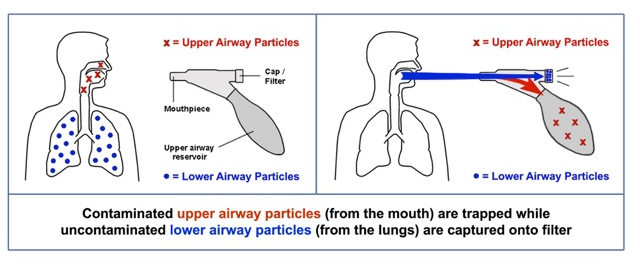Inventors at Georgia Tech and the CDC have developed a simple device for pneumonia diagnosis. The objective of this device is to provide a segregated sampling of the aerosol from the lower airway and the alveolar space through the combination of a single elastic bag and separate filter or detector. This minimizes the amount of contaminants from saliva and mucus collected from the oropharyngeal cavity, requiring no power, active values, or secondary apparatus.
- Simple: this device has fewer components than prior devices
- Inexpensive: this device is less expensive than previous devices due to its simpler design
- Pneumonia diagnosis
- EtOH detection
- Cancer cell sampling
- Lower airway content sampling
Pneumonia has a number of causes, including viruses, bacteria, and fungi. To treat this condition appropriately, it is necessary to identify the pathogen in the lower airway. This can be done by checking for the presence of the pathogen, virus, bacteria or fungus, in the lungs. In the United States there are around 10 million affected patients per year, and the World Health Organization estimates there are approximately 2 million deaths in children under 5 years of age from pneumonia. Obtaining a clean sample from the lung and confirming the diagnosis of pneumonia is difficult because of oral contaminants, therefore doctors need a simple way to collect a clean sample from the lower airway and alveoli.

